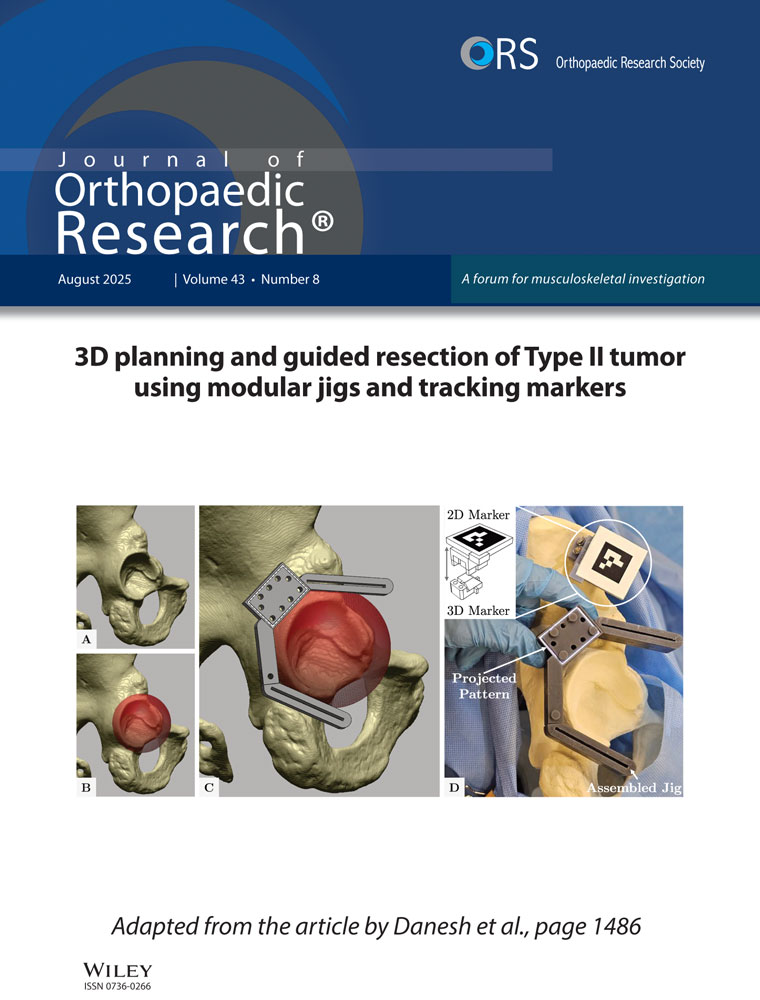Coordinate upregulation of cartilage matrix synthesis in fibrin cultures supplemented with exogenous insulin-like growth factor-I
Abstract
The addition of insulin-like growth factor-I to cartilage cultures is known to stimulate the synthesis of proteoglycan and type-II collagen in explant and monolayer studies. The purpose of this study was to determine the effects of long-term supplementation with insulin-like growth factor-I in chondrocytes cultured in fibrin discs as a preliminary investigation to in vivo application of chondrocyte/insulin-like growth factor-I/fibrin grafts to articular-cartilage repair procedures. Chondrocyte-fibrin cultures were maintained for 14 days, with insulin-like growth factor-I added at varying concentrations of 0, 10, 50, or 100 ng/ml medium. Cultures supplemented with 50 or 100 ng of growth factor/ml had increased levels of aggrecan and type-IIB procollagen mRNA, and translation to aggrecan and type-IIB collagen was confirmed by dye-binding assay of total proteoglycan, type-II collagen immunohistochemistry, and determination of collagen content by highperformance liquid chromatography. Maintenance of the chondrocyte phenotype during the 14 days of culture was confirmed by round cell morphology on routine staining, expression of type-II procollagen mRNA on in situ hybridization, evidence of production of pericellular type-II collagen on immunocytochemistry, synthesis of large-molecular-size aggrecan monomer on CL-2B column chromatography, and lack of appreciable message expression for type I or IIA collagen on Northern blot hybridization. Dose-response effects of insulin-like growth factor-I on the expression of chondrocyte matrix constituents were most pronounced at 50 and 100 ng of growth factor per milliliter of medium. These data confirm that (a) culture of chondrocytes for extended periods in three-dimensional cultures of fibrin maintains the chondrocyte phenotype and (b) supplementation with increasing concentrations of insulin-like growth factor-I enhances chondrocyte matrix synthesis and may provide a means to enhance chondrocyte phenotypic stability and function during transplantation grafting procedures.




